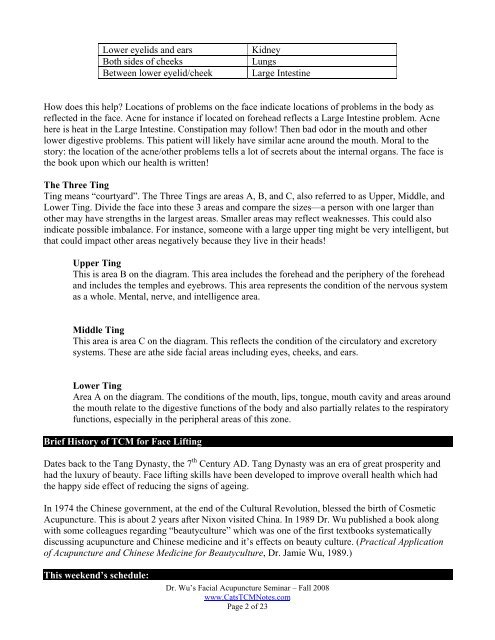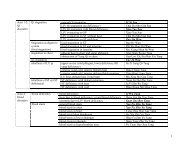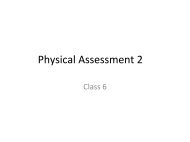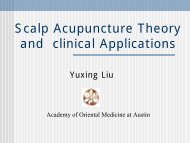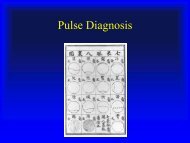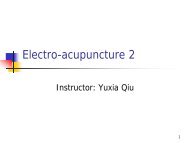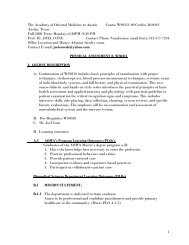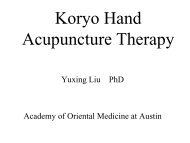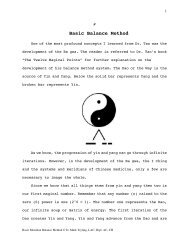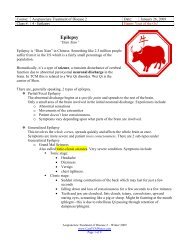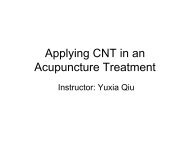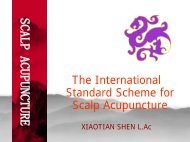Facial Acupuncture Seminar Notes.pdf - CatsTCMNotes
Facial Acupuncture Seminar Notes.pdf - CatsTCMNotes
Facial Acupuncture Seminar Notes.pdf - CatsTCMNotes
Create successful ePaper yourself
Turn your PDF publications into a flip-book with our unique Google optimized e-Paper software.
Lower eyelids and ears<br />
Both sides of cheeks<br />
Between lower eyelid/cheek<br />
Kidney<br />
Lungs<br />
Large Intestine<br />
How does this help Locations of problems on the face indicate locations of problems in the body as<br />
reflected in the face. Acne for instance if located on forehead reflects a Large Intestine problem. Acne<br />
here is heat in the Large Intestine. Constipation may follow! Then bad odor in the mouth and other<br />
lower digestive problems. This patient will likely have similar acne around the mouth. Moral to the<br />
story: the location of the acne/other problems tells a lot of secrets about the internal organs. The face is<br />
the book upon which our health is written!<br />
The Three Ting<br />
Ting means “courtyard”. The Three Tings are areas A, B, and C, also referred to as Upper, Middle, and<br />
Lower Ting. Divide the face into these 3 areas and compare the sizes—a person with one larger than<br />
other may have strengths in the largest areas. Smaller areas may reflect weaknesses. This could also<br />
indicate possible imbalance. For instance, someone with a large upper ting might be very intelligent, but<br />
that could impact other areas negatively because they live in their heads!<br />
Upper Ting<br />
This is area B on the diagram. This area includes the forehead and the periphery of the forehead<br />
and includes the temples and eyebrows. This area represents the condition of the nervous system<br />
as a whole. Mental, nerve, and intelligence area.<br />
Middle Ting<br />
This area is area C on the diagram. This reflects the condition of the circulatory and excretory<br />
systems. These are athe side facial areas including eyes, cheeks, and ears.<br />
Lower Ting<br />
Area A on the diagram. The conditions of the mouth, lips, tongue, mouth cavity and areas around<br />
the mouth relate to the digestive functions of the body and also partially relates to the respiratory<br />
functions, especially in the peripheral areas of this zone.<br />
Brief History of TCM for Face Lifting<br />
Dates back to the Tang Dynasty, the 7 th Century AD. Tang Dynasty was an era of great prosperity and<br />
had the luxury of beauty. Face lifting skills have been developed to improve overall health which had<br />
the happy side effect of reducing the signs of ageing.<br />
In 1974 the Chinese government, at the end of the Cultural Revolution, blessed the birth of Cosmetic<br />
<strong>Acupuncture</strong>. This is about 2 years after Nixon visited China. In 1989 Dr. Wu published a book along<br />
with some colleagues regarding “beautyculture” which was one of the first textbooks systematically<br />
discussing acupuncture and Chinese medicine and it’s effects on beauty culture. (Practical Application<br />
of <strong>Acupuncture</strong> and Chinese Medicine for Beautyculture, Dr. Jamie Wu, 1989.)<br />
This weekend’s schedule:<br />
Dr. Wu’s <strong>Facial</strong> <strong>Acupuncture</strong> <strong>Seminar</strong> – Fall 2008<br />
www.CatsTCM<strong>Notes</strong>.com<br />
Page 2 of 23


